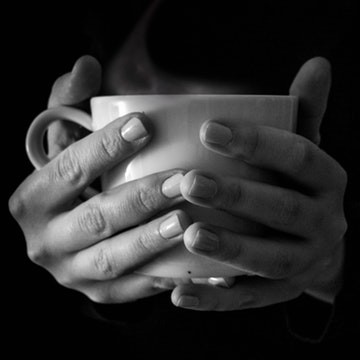In Pursuit of the Perfect Cup of Tea
Every stage of making the world’s most popular beverage, after water, is a science and getting them right makes all the difference.
Now I’m not talking about putting the milk in first or last (although personally, putting the milk in first would be an abomination to everything I hold dear!)
The first challenge is selecting good quality leaves. Unless you know exactly what you are looking for, you can only hope your supplier or retailer has done their due diligence on your behalf.
How does your water flow?
The second thing to get right is water quality. The knowledge of water quality and the importance of your water source for tea dates from 760CE when Chinese tea scholar Lu Yu wrote three scrolls known as The Classics of Tea. Along with his love of tea, he was fascinated with water itself. He wrote in The Classics of Tea that the best water to be used is from high mountain springs. The next best is that of flowing rivers, and finally ground water, drawn up from wells.
The difference in the water from each source is due to the journey the water has taken and the minerals that have been picked up along the way. High mountain spring water is naturally filtered and, in some cases, enriched with specific minerals from volcanic rocks, as seen in some high-end water bottles available from the high street.
As you descend Lu Yu’s list, the water tends to get harder with a higher calcium content and this can bring a dull taste to your tea once steeped. To combat this, a home-based filtration system is ideal, using activated charcoal to filter the water.
Is your tea struggling to breathe?
Next on the list is oxygen. Using a commercial boiler that is constantly boiling has the adverse effect of boiling the oxygen out of your water which will result in a flat, dull-flavoured tea. If using a kettle, any unused water is redundant and cannot be boiled again. An alternative method of retaining oxygen is to use a vacuum insulated water boiler.
Freshly drawn filtered water is ideal for each time you make a cup of tea. Either measuring the correct amount required before filling up your kettle, or using a vacuum insulated water boiler, is the best course of action to ensure your water is in its optimum state ready for brewing.
Can your tea be too hot?
Yes, is the answer. You have already selected a good source for your water and ensured it is freshly drawn and filtered prior to heating. The next variable within your control is the water temperature. Boiling water is ideal for black tea or caffeine-free herbal infusions, extracting the flavour fast. For other categories of tea, the intense boiling water has yet another adverse effect.
Green tea, which most people are not fans of for its bitter and astringent flavour, may just be caused from ‘burning the leaves’. Green tea is delicate and so must be steeped in lower temperatures. This is to prevent the bitter notes from catechins, which are found in green tea in high quantities, from being extracted too quickly and aggressively.
Waiting two minutes after boiling before pouring the water over the leaves will bring the temperature to approximately around 80 degrees Celsius and will result in your green tea delivering a sweeter and smoother grassy note.
For the other categories of tea including white, yellow and oolong, temperature plays an important part in the flavours delivered to the end customer. There are guidelines on where to start and the best parameters to use, but in the end, experimenting with each tea and temperature within and outside the guidelines, will be where you find out what works for you and your customer.
Who’s watching the clock?
The last piece of the puzzle is timing. How long do you leave your tea steeping? Different tea categories, size and quality of the leaf require different times for brewing. Generally, the smaller leaf black teas, dark teas and delicate high-grade Japanese green teas require a short brewing time from 20 seconds to 2-3 minutes. Larger leaf black teas and Chinese green teas are more robust and require 3-4 minutes. Dark and balled oolongs are best around 3 minutes with yellow and white teas around 3-4 and 3-6 minutes respectively.
As a starting guide it is best to use the timings provided, then experiment with increasing or decreasing the steep time by 30 seconds until you find the desired flavour, aroma and mouthfeel.
Experiment for yourself
Have you got a favourite tea? One you can pick out from a line-up for its distinctive aroma, taste and mouthfeel? Going through each stage and experimenting under these new conditions, may transform your chosen tea to something somewhat unfamiliar.
The Pursuit
For each tea, these stages need an element of experimentation and practice, in order to provide your customers with the best possible experience. Patience with the steep is as important as the quality of the leaf. Explaining this to your customers, as well as delivering the results, is all part of their experience.
With knowledge passed down from tea scholar to tea scholar, nothing further remains but to continue the never-ending pursuit for the perfect cup of tea.
Get in Touch: Brighteas Ltd
brighteas.com
service@brighteas.com
07715660089
FACEBOOK
INSTAGRAM









